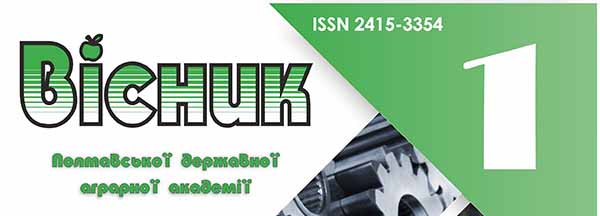OPTIMAL CAGE DENSITY OF BROILER CHICKENS IN THE CONDITIONS OF SMALL FARMS
DOI:
https://doi.org/10.31210/visnyk2021.04.22Keywords:
small farm, productivity, cage density, broiler chickens, deep litter, marketability of meatAbstract
The article presents the material on topical issues of improving the technology of broiler chickens production on the small farm “Nyva-2011” in Kherson region. For modern small farms having small land areas, it is important to use them rationally. An important indicator is cage density, i.e. the ratio of the number of chickens (in heads or live weight) per unit of area or equipment (heads/m2, kg/m2, heads per auto-drinker or feeder, etc.). The use of cage density indicator in poultry farming enables to avoid the phenomena of overloading and irrational use of space and equipment in premises. To set up the experiment, five groups of broiler chickens (the control one and four experimental) were formed, which were kept at different cage densities. As a result of the study, it was found that there was no difference between the groups depending on the cage density up to 4 weeks of age. From the age of 28 days in the fourth and fifth groups there was a decrease in average live weight by 30.8 g and 50.7 g, respectively, compared with the control group. At 8 weeks of age, broiler chickens of the first and second groups exceeded the chickens of the fourth and fifth groups in live weight. There were no significant differences between the groups in terms of livability; the lowest chicken livability was in the fifth group with the cage density of 28 heads/m2. The analysis of the obtained data and calculation of economic efficiency allows us to conclude that the cage density at raising broiler chickens on deep litter up to 4 weeks of age can be increased to 28 heads/m2 without reducing zoo-technical requirements to keeping. The cage density in the conditions of farms affects the economic efficiency of broiler meat production. We have found that the output of meat per unit of useful area in all experimental groups was 30 kg or more, in the second experimental group it amounted to 38.77 kg/m2. Better carcass marketability and meat quality were also observed in the second group.

 Creative Commons Attribution 4.0 International Licens
Creative Commons Attribution 4.0 International Licens